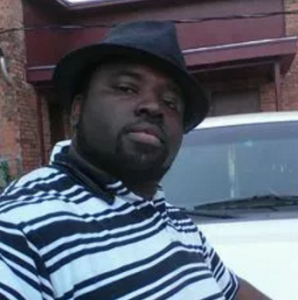Alvin Joseph, worked late nights. His only mistake was taking his dog out for a walk after arriving home at about midnight last March 2. Detective Michael Yeric Thursday night spoke of Joseph, the last case he received before moving from homicide to the cold case department. Joseph had no criminal record, he’d raised two daughters, he lived with their mother and he had a regular, good job. As he walked along Adelta, the road that lines his apartment complex, which is near the Skillman DART station, a car pulled out of the gate, someone inside the car confronted him and shot him in the face. Then the car went back inside the apartment gate. “We know all this because he lived for almost two days and was able to tell us,” the detective says.
Yeric and other Dallas homicide detectives heading up unsolved cases in the northeast area of Dallas, which mostly covers Lake Highlands, asked a hundred or more neighbors who showed up to an unsolved homicide forum at Lake Highlands North Recreation Center to help them.
“We have some of the best homicide detectives in the country,” says supervisor Sgt. Calvin Johnson, “but in order to close these cases we need citizens to come forward.”
Six homicide detectives were on hand to explain the process from the point of a 911 call on into the investigation.
After a crime against person 911 call is placed, patrol officers are first to show up, explains Johnson. Often they will push bystanders back as they secure the scene. Johnson stresses, “If you witness something, please don’t leave, even if you are asked to back away. Or if you do witness and must leave, please at least get your contact information to us so we can get a statement.”
Recorded statements are very important to an investigation. They often are vital when cases take a year or two to solve, the detective says.
Frequently it takes much longer than 48 hours to track down a suspect. These days there are social media records, video, cell phone records and other data to be collected, but that can take time. “So if you are here as a family of a victim and you feel we aren’t working, we are. We sometimes are waiting,” Johnson says.
Getting information out to the public also is frequently an early step in the process. You can follow requests for public assistance on crimes at dpdbeat.com, he reminds.
The detectives confirm some things that anyone who follows dpdbeat or Advocate know already — most murders are related to drugs. The detectives did not have stats, but all felt confident estimating that at least more than 50 percent of homicides are drug related. A vast majority of murders are committed with firearms. Also, Johnson confirms, many happen within apartment communities — most of those inside apartment homes but also in apartment common areas.
They stressed that in their experience, retaliation against witnesses is not a common occurrence.
And that random shootings as gang initiation is an urban legend, according to gang experts with whom they have worked closely. It’s hard to say without more evidence whether the random crimes are mistaken identity or what.
Other detectives shared recent cases — from 2016 and 2017 — that they are eager to solve. Detective Steven David is working on another case in which an innocent man was murdered seemingly at random. Last October 24 at about 9:30 p.m. someone shot and killed Adan Zavala as he walked across the breezeway of the Courtyard Village Apartments. “This was a guy who had been out looking for work all day. He was in the body shop, auto repair business. He finally rode the bus home after 9 p.m.” Detectives were able to trace his steps throughout the day up to the last body shop he visited in the late evening, near the Jupiter DART station. Police obtained a video of a silver car fleeing the crime, but it did not capture the license plate information.
The Dallas Police Department has information about unsolved murders on dpd.com and now plans to repost details of unsolved cases there on the anniversaries of the killings, in order to keep the cases in the public eye.






